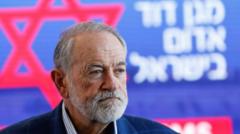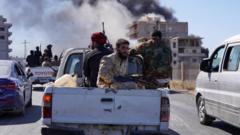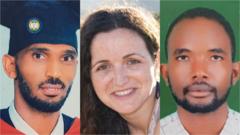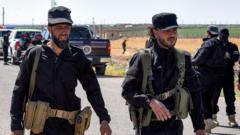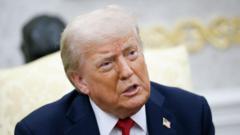Over 100 fatalities have been reported amidst escalating sectarian conflict in southern Syria, highlighting challenges faced by the Syrian government and the complexities of regional security dynamics.**
Sectarian Clashes Erupt in Southern Syria with Fatal Consequences**

Sectarian Clashes Erupt in Southern Syria with Fatal Consequences**
Violence surges in Sweida Province as Druse militias and Bedouins clash, prompting government intervention and Israeli airstrikes.**
The situation in southern Syria has taken a grave turn, as clashes between militias from the Druse religious minority and Bedouin groups in Sweida Province have culminated in significant loss of life. The fighting began on a Sunday when a Bedouin tribe allegedly attacked and robbed a Druse individual along a key highway, escalating into a series of violent exchanges. The Syrian Observatory for Human Rights reported that more than 100 people have lost their lives since the outbreak of violence, marking one of the deadliest sectarian conflicts in recent years.
In response to the ongoing unrest, the Syrian government deployed military reinforcements to the region, led by claims of merely wanting to restore order. However, distrust towards the new government has proven to be a major barrier. Many Druse militia leaders are convinced that the government forces aim to support the Bedouins in their conflict against them. This led to further hostilities and clashes between Druse militias and government troops.
Adding to the complexities of the situation, Israel has intervened with airstrikes against Syrian government forces situated in Sweida, a move that raises concerns about further regional destabilization. Amidst the chaos, the Syrian defense minister announced a cease-fire order, but the effectiveness of such measures remains uncertain, especially in a context rife with sectarian tensions and a history of conflict.
The situation in southern Syria underscores the fragility of the current regime and the intricate social dynamics that continue to shape the landscape post-civil war. Both local and foreign actors are becoming deeply involved, with an uncertain path to peace ahead as fighting continues to threaten civilian lives and regional stability.
In response to the ongoing unrest, the Syrian government deployed military reinforcements to the region, led by claims of merely wanting to restore order. However, distrust towards the new government has proven to be a major barrier. Many Druse militia leaders are convinced that the government forces aim to support the Bedouins in their conflict against them. This led to further hostilities and clashes between Druse militias and government troops.
Adding to the complexities of the situation, Israel has intervened with airstrikes against Syrian government forces situated in Sweida, a move that raises concerns about further regional destabilization. Amidst the chaos, the Syrian defense minister announced a cease-fire order, but the effectiveness of such measures remains uncertain, especially in a context rife with sectarian tensions and a history of conflict.
The situation in southern Syria underscores the fragility of the current regime and the intricate social dynamics that continue to shape the landscape post-civil war. Both local and foreign actors are becoming deeply involved, with an uncertain path to peace ahead as fighting continues to threaten civilian lives and regional stability.


